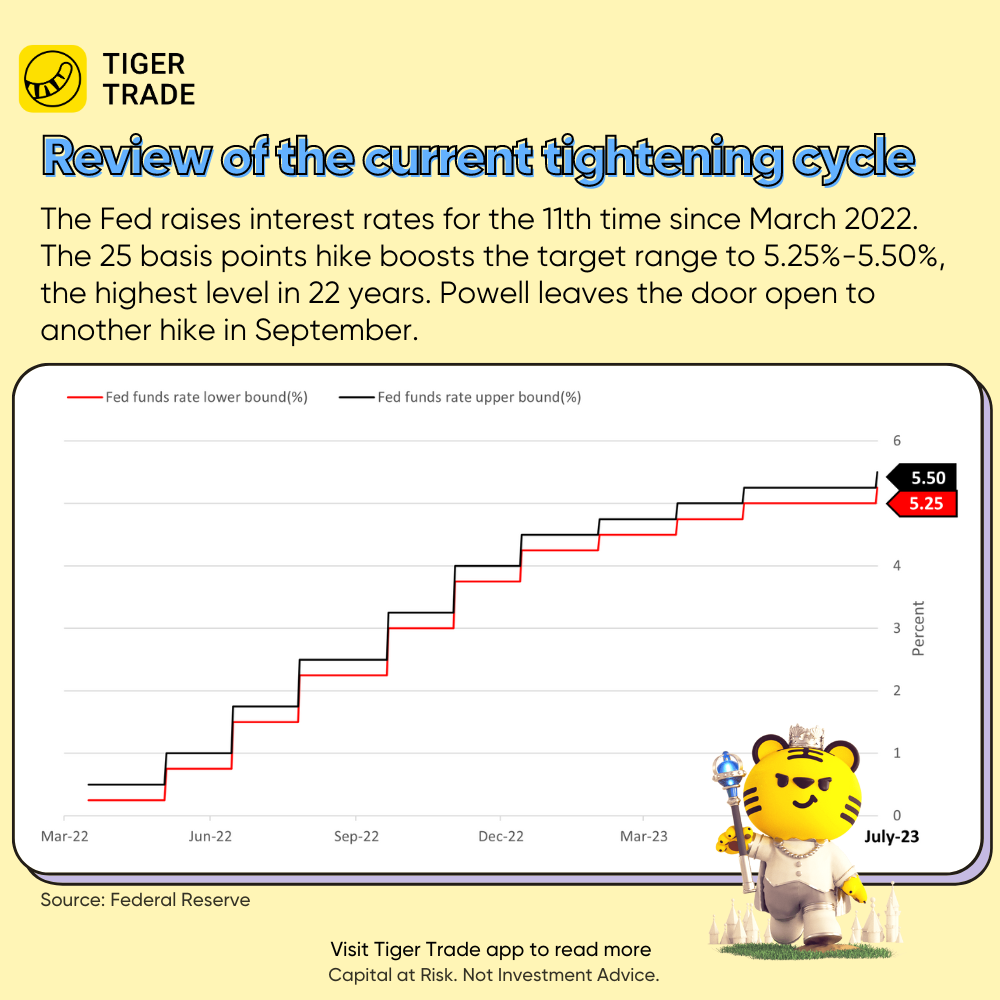The Fed raises interest rates for the 11th time since March 2022 to curb inflation. The 25 basis points hike boosts the target range to 5.25%-5.50%, the highest level in 22 years. The chart below shows the rate path of the current tightening cycle.
Powell says rate hike possible at September meeting
"The FOMC will continue to assess additional information and its implications for monetary policy," the Fed said in language that was little changed from its June 14 statement and which left the central bank's policy options open as it searches for a stopping point to the current tightening cycle.
Powell made no promises either way, with a September meeting eight weeks from now considered "live" for another rate increase, though a continued slowing of inflation and weaker economic data may also prompt policymakers to pause.
Powell acknowledged as a positive development that inflation has fallen from the highs of last year without serious damage to the economy.
But as the Fed enters a tricky period in its inflation fight, balancing the need for further rate increases against the risks of going too far, he said finishing the task on inflation will likely require some economic losses.
"My base case is that we will be able to achieve inflation moving back down to our target without a really significant downturn that results in high levels of job losses," Powell said. "But it's a long way to be sure and we have a lot left ... Reducing inflation is likely to require a period of below-trend growth and some softening of labor market conditions."
As stated after its meeting last month, the Fed said it would watch incoming data and study the impact of its rate hikes on the economy "in determining the extent of additional policy firming that may be appropriate" to reach its inflation target.
Fed to consider "extent of additional policy firming"
Powell said the Fed’s influential staff no longer was forecasting a recession to begin this year, as they had in March, May and June, and instead was projecting a “noticeable slowdown” in growth.
The Fed fights inflation by slowing the economy through raising rates, which causes tighter financial conditions such as higher borrowing costs, lower stock prices and a stronger dollar. The fed-funds rate influences other borrowing costs throughout the economy, including rates on mortgages, credit cards and auto loans.
The Fed boosted interest rates aggressively in 2022 and then slowed the pace at the end of the year. Holding rates steady in June offered a way to further dial down the pace of increases and study the effects of those rapid moves, particularly after fears that banking stress this spring might further constrain credit.
“For this last part of the tightening cycle, it makes sense to stretch it out over time. They are fine-tuning. They don’t know the exact destination. It makes sense to do that slowly,” said Angel Ubide, head of economic research for global fixed income at Citadel, a hedge-fund firm.

Comments